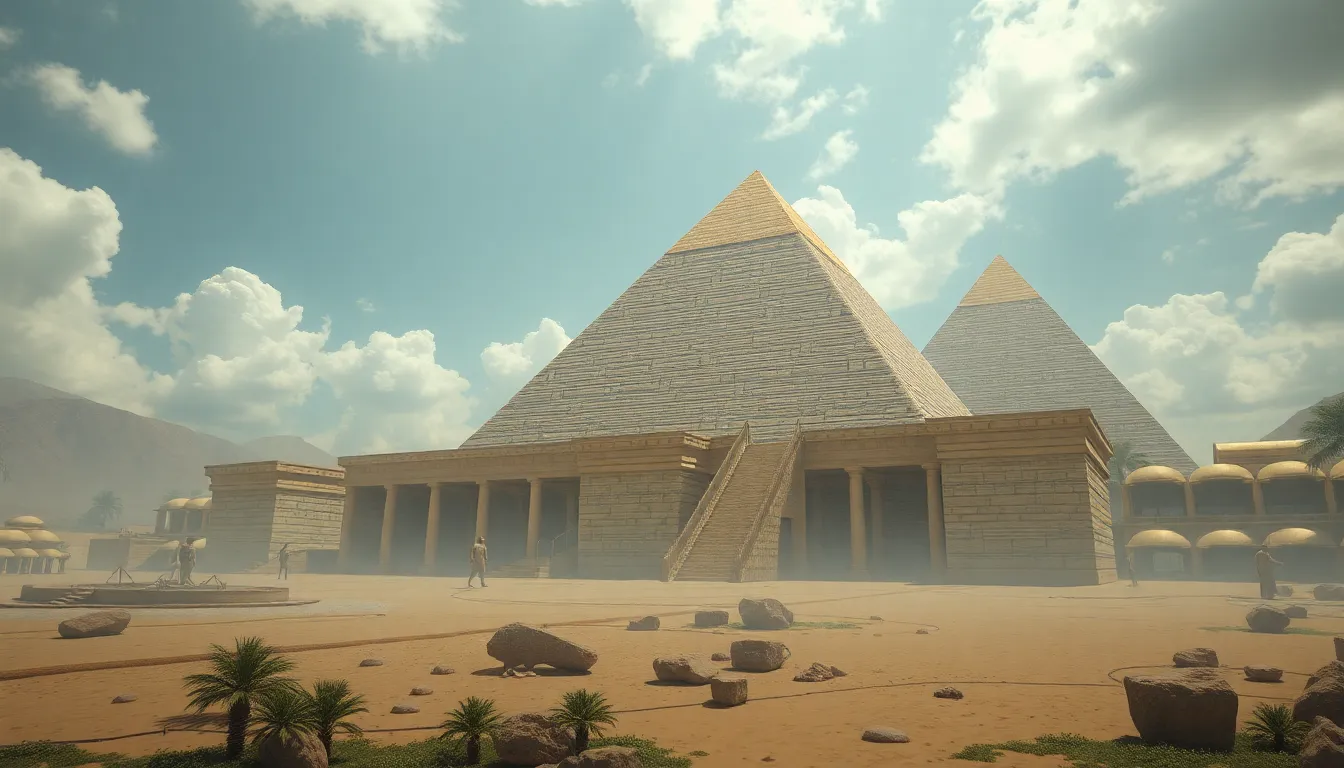The Art of Myth-Making: How Egyptians Crafted Their Legends
I. Introduction to Egyptian Mythology
Mythology plays a crucial role in understanding ancient cultures, serving as a lens through which we can explore their beliefs, values, and worldviews. Egyptian mythology is particularly rich and complex, reflecting the civilization’s long history and cultural depth.
Egyptian mythology is the collection of myths that were an integral part of ancient Egyptian religion. It encompasses a vast array of deities, creation stories, and moral lessons, all intricately woven into the daily lives of the ancient Egyptians. This article delves into the various aspects of Egyptian mythology, exploring the gods and goddesses, creation myths, the afterlife, and how these stories influenced the culture.
II. The Role of Deities in Egyptian Myths
The pantheon of Egyptian gods and goddesses is extensive, with each deity representing different aspects of life and the natural world. Major figures include:
- Ra: The sun god, often considered the most important deity.
- Osiris: God of the afterlife and resurrection.
- Isis: Goddess of motherhood and magic.
- Horus: God of the sky, often depicted as a falcon.
- Anubis: God associated with mummification and the afterlife.
The interplay between human and divine in these myths is significant. Deities often interacted with humans, guiding or punishing them based on their actions. This relationship underscores the ancient Egyptians’ belief in a universe governed by divine order, where human behavior could influence the favor of the gods.
III. Creation Myths: The Origins of the World
Egyptian creation myths vary significantly, with two primary narratives being the Heliopolitan and Memphite creation stories.
- Heliopolitan Creation Myth: This myth centers around the sun god Ra and the primordial waters of chaos, Nun. From Nun emerged the first land, and Ra created other gods to populate the world.
- Memphite Creation Myth: In this version, the god Ptah created the world through thought and speech, emphasizing the power of the spoken word in bringing forth order from chaos.
These creation myths are rich with symbolism, often reflecting the Egyptians’ views on life, death, and the cyclical nature of existence. Themes of rebirth and continuity are prevalent, showcasing their understanding of the natural world and its mysteries.
IV. The Afterlife and Its Influence on Mythology
Beliefs surrounding death and the afterlife were central to Egyptian mythology. The ancient Egyptians viewed death not as an end but as a transition to another existence. The concept of the afterlife was intricately linked to their mythology, with Osiris being a key figure in this belief system.
The Book of the Dead, a collection of spells and illustrations, served as a guide for the deceased to navigate the afterlife. It emphasized the importance of moral conduct in life, as one’s deeds would determine their fate in the afterlife. The weighing of the heart ceremony, where the heart was measured against the feather of Ma’at (the goddess of truth), was a critical moment in this journey.
V. Heroes and Legends: The Epic Tales
Among the most celebrated figures in Egyptian mythology are Osiris and Horus. Their stories are epic tales that embody themes of sacrifice, vengeance, and justice.
- Osiris: After being murdered by his brother Set, Osiris’ resurrection by his wife Isis symbolizes hope and renewal. His story serves as a metaphor for the cycles of nature.
- Horus: The struggle between Horus and Set for the throne of Egypt represents the fight between good and evil, order and chaos. Horus’ eventual victory reinforces the idea of divine legitimacy.
These legends not only entertain but also impart moral and ethical teachings, reflecting the values of ancient Egyptian society.
VI. Cultural and Historical Influences on Myth-Making
The development of Egyptian myths was heavily influenced by the civilization’s geography, politics, and society. The Nile River, for instance, was central to their agricultural practices and thus featured prominently in their mythology as a life-giving force.
Additionally, interactions with neighboring cultures, such as the Nubians and Mesopotamians, enriched Egyptian mythology. Ideas and deities often crossed borders, leading to a more diverse mythological landscape.
VII. Artistic Expressions of Myths
Art, literature, and architecture served as vital mediums for expressing Egyptian mythology. Temples, tombs, and monuments were often adorned with scenes depicting myths and deities, intertwining religious beliefs with artistic expression.
Symbolism played a significant role in Egyptian art. Common symbols include:
- Ankh: Symbol of life and immortality.
- Scarab: Represents rebirth and transformation.
- Lotus flower: Symbolizes creation and rebirth.
These artistic expressions not only celebrated the myths but also served to communicate the values and beliefs of the society.
VIII. Legacy and Modern Interpretations of Egyptian Myths
The influence of Egyptian mythology extends into contemporary culture, inspiring literature, film, and art. Characters and themes from ancient myths are often reinterpreted in modern storytelling, showcasing their timeless relevance.
Ongoing scholarly research continues to uncover the complexities of these ancient legends, shedding light on their significance in understanding human nature and cultural development. Public interest in Egyptian mythology remains high, with exhibitions and media portraying the grandeur of this ancient civilization.
IX. Conclusion
In conclusion, the art of myth-making in ancient Egypt was a multifaceted endeavor that reflected the civilization’s beliefs, values, and understanding of the world. These myths not only provided explanations for natural phenomena and human experiences but also served as moral guides and cultural touchstones.
The enduring relevance of Egyptian mythology in today’s world speaks to the universal human quest for meaning, identity, and connection to the divine. As we continue to explore these ancient stories, we gain insights into the complexities of our own existence and the shared narratives that unite humanity across time and space.




